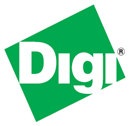 Device Cloud Smart Energy ConnectPort X2e and ERT Documentation
Device Cloud Smart Energy ConnectPort X2e and ERT Documentation
As an integral part of the Drop-in Networking strategy, the Python development environment is incorporated by Digi into each gateway. Digi’s integration of the open Python scripting language provides customers a truly open standard for complete control over connections to devices, manipulation of data, and event-based actions. For more information about the Digi Python custom development platform, visit our Python portal today at: http://www.digi.com/technology/drop-in-networking/pdr.jsp
The ZigBee Smart Energy Profile defines a wireless home area network (HAN) to manage energy in residential areas. These networks are local to the home and connect through a gateway back to the Utility head-end application. The current devices defined for Smart Energy are:
- Meter - Reports consumption of energy, water, gas, etc.
- Energy Service Interface (ESI) - Gateway from the Utility head-end to the HAN. Formerly refered to as Energy Service Portal (ESP)
- In-Premise Display (IPD) - Displays consumption and pricing information for the consumer. Also refered to as In-Home Display (IHD)
- Programmable Communicating Thermostat (PCT) - Smart thermostat.
- Load Control Device - Can limit or turn off power to devices during high load times.
- Range Extender - Fills in gaps in wireless HAN.
Advantages of a ZigBee Smart Energy network:
- Automated meter reading - Remotely report meter usage for Electric, Gas, Water, etc. in real time.
- Reduce peak power usage - Accomplished through mandatory energy reduction events and financial motivation using pricing.
- Empower customers - Give customers access to real time meter usage data and pricing. Also creates a network connection to devices like thermostats in the home which may be used to remotely control set points and setbacks
The Python Smart Energy Framework (SE Framework) discussed in this manual is a generic implementation of Smart Energy application and device level functionality written in Python. The SE Framework provides various public APIs that can be accessed through the Device Cloud to interact with and control other devices on the Smart Energy network.
The SE Framework is also capable of simulating a Smart Energy network to present legacy devices as Smart Energy devices. Higher level interfaces that already understand Smart Energy, such as Digi X-Grid can then consume data from simulated devices without the need for special configuration.
The following resources are referred to throughout this User’s Manual. This page is intended to be a convenient reference.
Go to the ConnectPort X2e for Smart Energy Documentation page or click on the link to download the following:
Go to the ConnectPort X2e for Smart Energy Documentation page or click on the link to download the following online documents for detailed information on accessing and using the ConnectPort X2e for Smart Energy.
The referenced specifications are provided by the ZigBee Alliance and can be downloaded from the ZigBee Alliance Website.